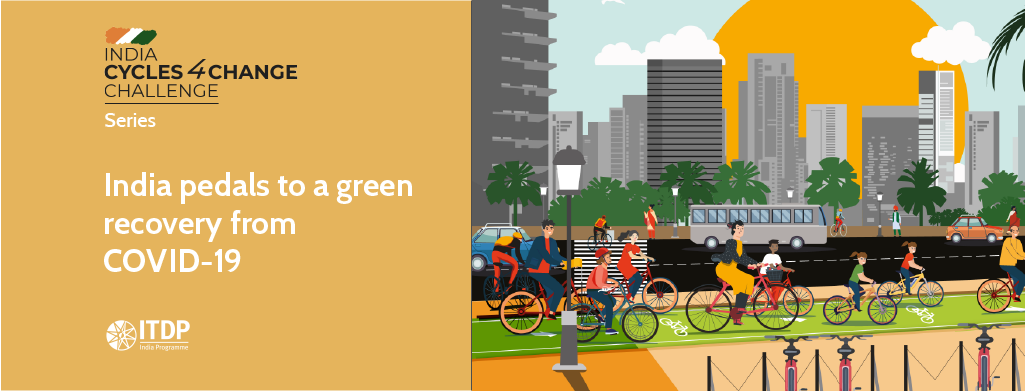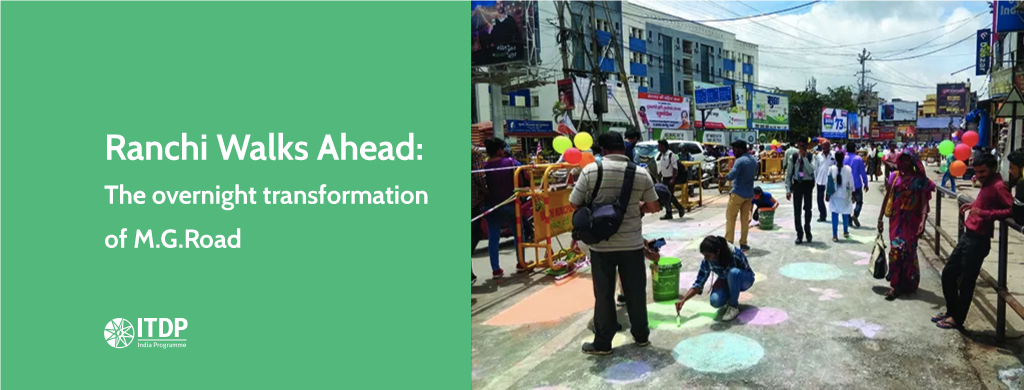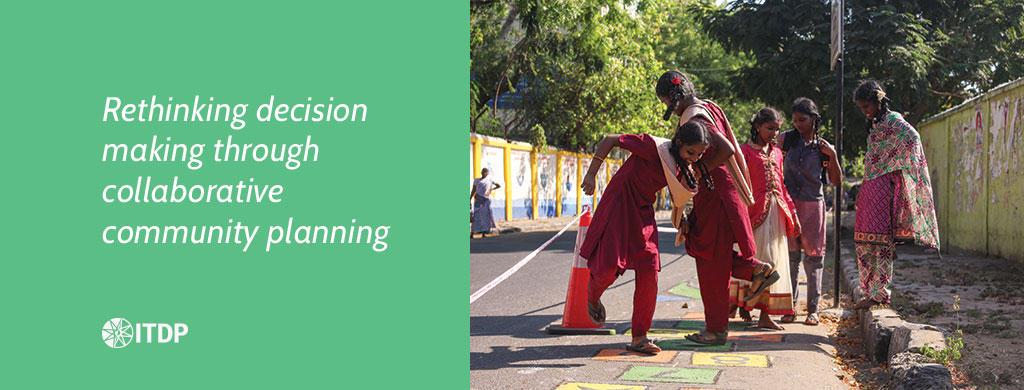Launch of the India Cycles4Change Challenge
The Smart Cities Mission, Ministry of Housing and Urban Affairs (MoHUA), Government of India, in partnership with the ITDP India programme hosts the India Cycles4Change Challenge aiming for a green recovery from COVID-19. Shri Hardeep Singh Puri, the Minister of State, MoHUA, launched the Challenge on 25th June 2020 at the 5th Anniversary Celebration of the Smart Cities Mission. The Challenge aims to inspire a nation-wide transformation, with an ambitious vision of creating over 10,000 kilometres of attractive cycling infrastructure and adding 100 million new cycles to our cities to make cycles accessible to every citizen. 107 cities—including all 100 Smart Cities— from across the country have registered for the Challenge and are set to create a cycling revolution.


What is the India Cycles4Change Challenge?
The India Cycles4Change Challenge is a one-of-its-kind nationwide challenge to inspire Indian cities to embrace a cycling transformation. The Challenge is an initiative by the Smart Cities Mission, MoHUA in partnership with the ITDP India Programme and is supported by the Fit India Movement and the Swachh Bharat Mission. The Challenge encourages cities to implement quick cycling-friendly interventions in the wake of COVID-19, with support from experts and citizens. The Challenge is open for all cities under the Smart Cities Mission, capital cities of States/UTs, and all cities with a population of more than 5 lakh people.
On July 10th 2020, the Smart Cities Mission, MoHUA launched the online Challenge portal and opened registrations for all eligible cities to apply. Over 450 participants attended the launch event, including CEOs of Smart Cities, Commissioners, city officials, civil society organizations, experts, and citizens.
Launching the Challenge portal, Kunal Kumar- IAS, Joint Secretary, Smart Cities Mission, spoke about the vision for the India Cycles4Change Challenge, “The COVID-19 pandemic is an opportunity for cities to reinvent themselves. Cycling offers us a healthy, affordable, and COVID-safe solution for a green recovery. Through this Challenge, the Smart Cities Mission offers cities an opportunity to transform themselves into cycling-friendly cities for everyone.”
Stages of the Challenge
Presenting the Challenge brief, Shreya Gadepalli- South Asia Programme Lead, ITDP, highlighted the importance of a TEST-LEARN-SCALE approach, “In a collaborative process, Indian cities should TEST through pilots, LEARN together with citizens and experts, and SCALE-up interventions. The Challenge is a unique opportunity to explore a wide range of physical interventions, policy reforms, and schemes towards making our cities cycling-friendly.”
Spanning across a year, the Challenge will happen in two stages. Stage One will run until October 2020, and cities will pilot quick interventions to promote cycling, as well as develop a scale-up strategy. The pilot interventions should focus on making cycling safe and fun by creating pop-up cycle lanes, dedicated parking, and traffic-calmed slow zones. In addition, cities could launch programmes such as a public bicycle-sharing system, community-led cycle rental schemes, and cycle repair clinics.

At the end of Stage One, cities will be assessed and 11 shortlisted cities will receive funding of Rs. 1 Crore each. In Stage Two, to be held until May 2021, the selected cities will receive guidance from national and international experts to scale-up the initiatives. The process will repeat multiple times to encourage cities to embrace a cycling transformation.
Throughout the Challenge, the ITDP India Programme will guide cities with online workshops, technical resources, discussions with experts, and peer-to-peer learning sessions with the other registered cities.
Transforming Indian cities, one step at a time

In response to the pandemic, Indian cities have been actively promoting cycling as a safe means of commuting and exercising. Even before the launch of the Challenge, Kolkata has proposed a dedicated cycle corridor by reclaiming parking spaces. The city will conduct a preliminary road survey over the next four months, and aims to implement the project by early 2021. In cities like Jaipur, Pune, Pimpri Chinchwad, and Guwahati, Civil Society Organisations and local champions have started conducting surveys for citizens to vote for the best routes for bicycle lanes in the city. The Cycles4Change Challenge has transcended this spirit at the nation-level. 107 cities—including all 100 Smart Cities—from across the country have registered to be part of this cycling revolution. Cities like Bhopal, Chandigarh, Kohima, Kolkata, Prayagraj, Surat, and many more have launched extensive campaigns with the support of cyclist groups and interested citizens, spreading the word through social media and newspapers.

The ITDP India Programme is proud to partner with the Smart Cities Mission to inspire Indian cities to create streets for cycles and people, not just for cars. With a strong vision and platform to learn, share, and experiment, Indian cities are all set to make the COVID-19 crisis an exhilarating opportunity to reimagine urban mobility. It’s time to pedal our way to a green recovery and a resilient future.
If you are a civil society organisation, consultant, corporate or concerned citizen eager to support your city in the India Cycles4Change Challenge, register here – https://bit.ly/30L0vnd
This article is part of a series of articles on the India Cycles4Change Challenge.
Read Part 2 in the series on 10 ways you can make India a cycling nation
Written by Balanagendran
Edited by Keshav Suryanarayanan
Graphic Design by Sujai Chandran and Aishwarya Soni


















